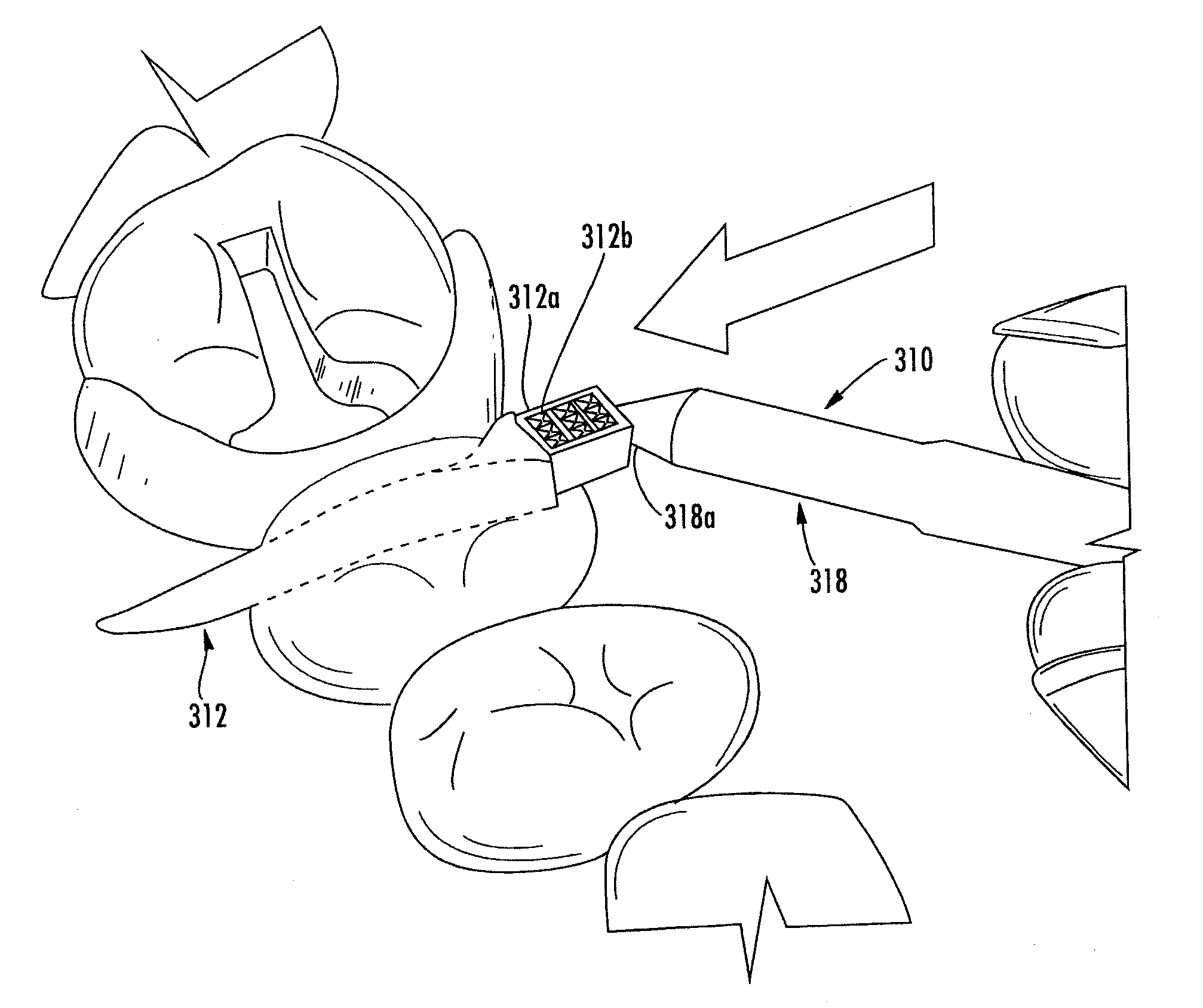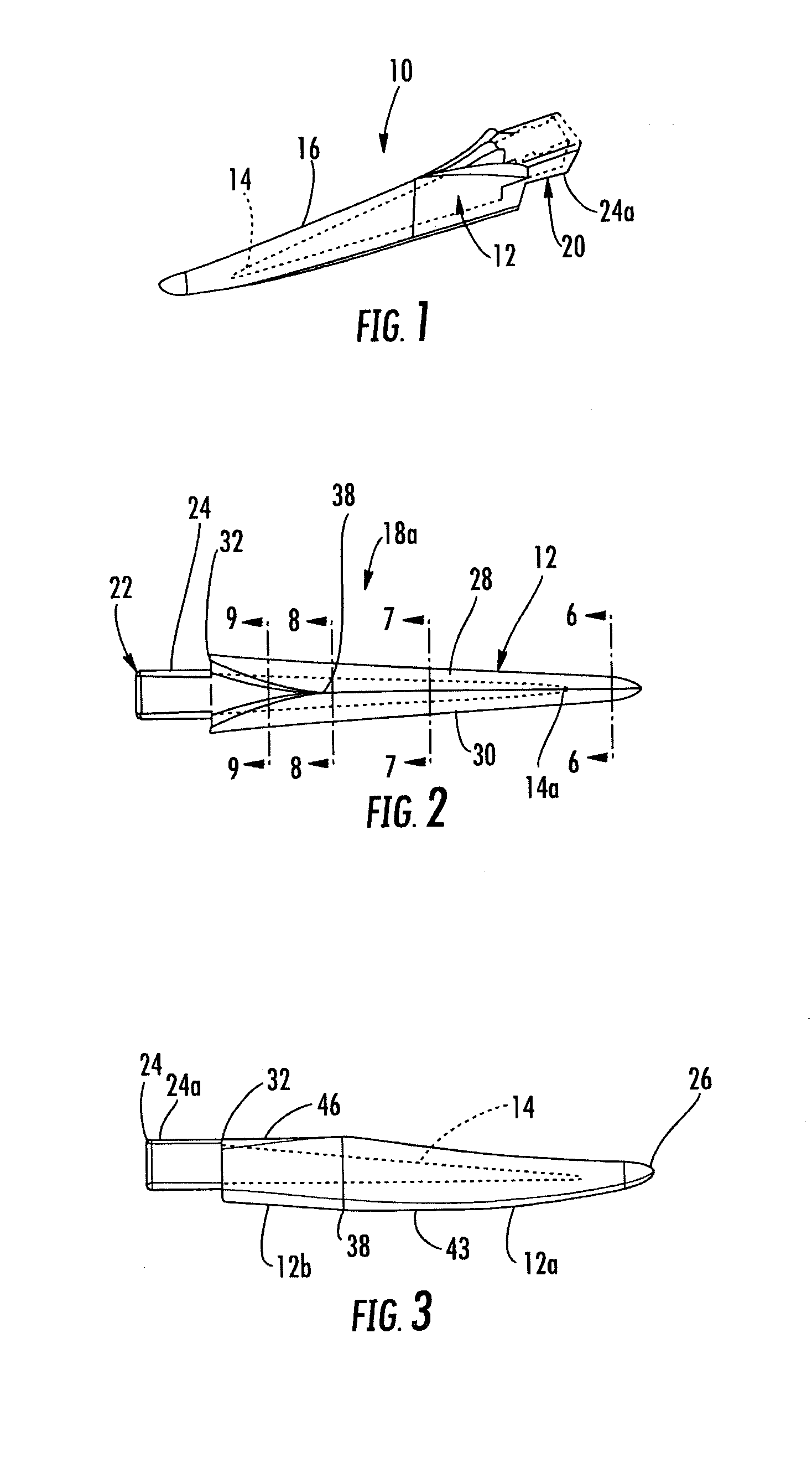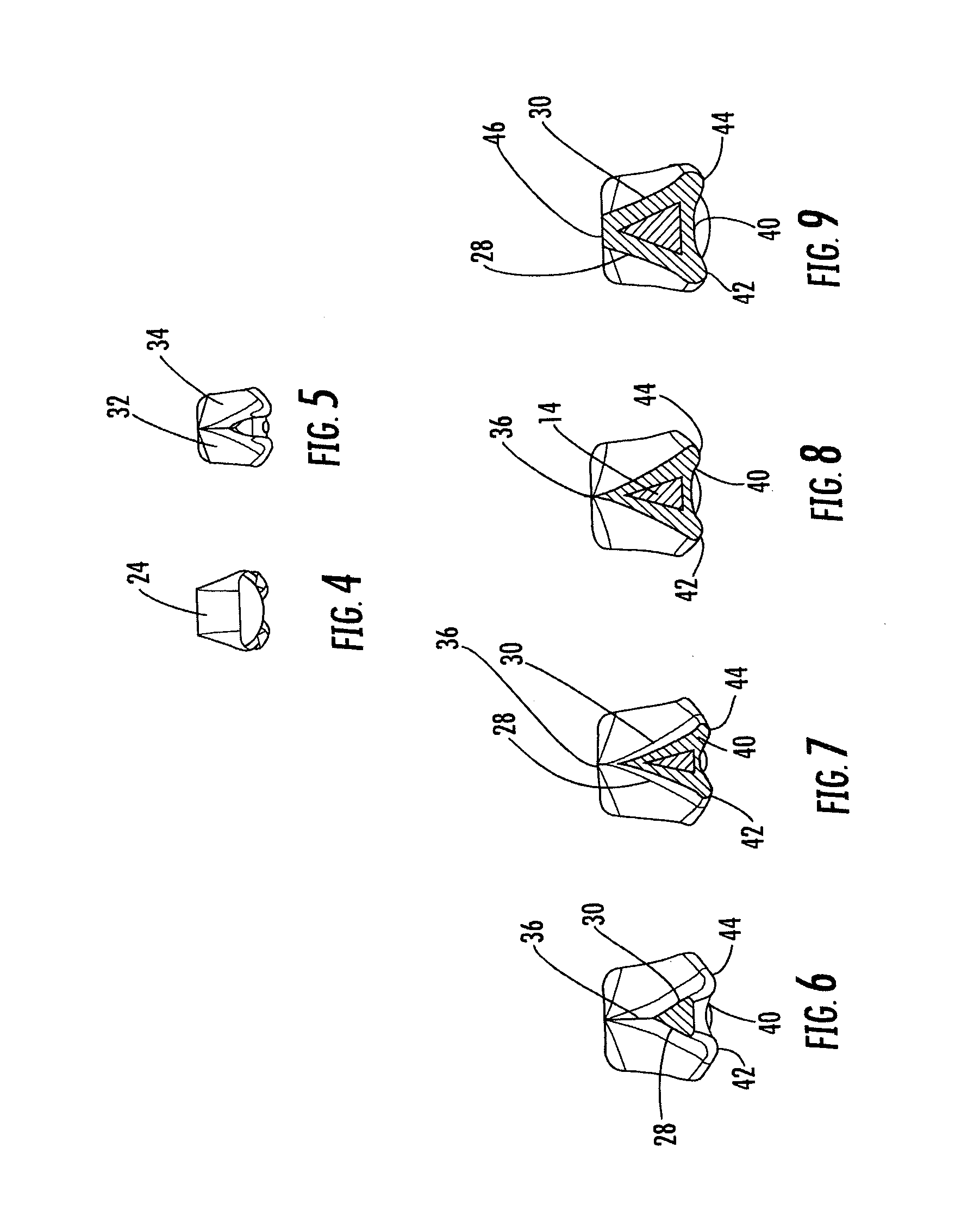Wedge for use in dental restoration
- Summary
- Abstract
- Description
- Claims
- Application Information
AI Technical Summary
Benefits of technology
Problems solved by technology
Method used
Image
Examples
Embodiment Construction
[0096]Referring to FIGS. 1–9, the numeral 10 generally designates a dental wedge of the present invention. As will be more fully described below, dental wedge 10 minimizes the trauma to the gum tissue when the dental wedge is inserted between teeth (as will be more fully discussed in reference to FIGS. 34 and 35) while providing a wedge that exhibits reduced slippage after insertion between the adjacent teeth.
[0097]As best seen in FIGS. 1–3, dental wedge 10 includes an elongate body 12 that includes a core 14 and an outer surface 16. Preferably, outer surface 16 is softer than core 14 to minimize trauma to the gum tissue when wedge 10 is inserted in the interproximal area between adjacent teeth. For example, core 14 may comprise a plastic material, a metal or wood or other suitable generally rigid materials. In contrast, outer surface 16 is preferably formed from a softer plastic material, such as an elastomer, including a thermal plastic elastomer (TPE), such as SANTOPRENE®, having...
PUM
 Login to View More
Login to View More Abstract
Description
Claims
Application Information
 Login to View More
Login to View More - R&D
- Intellectual Property
- Life Sciences
- Materials
- Tech Scout
- Unparalleled Data Quality
- Higher Quality Content
- 60% Fewer Hallucinations
Browse by: Latest US Patents, China's latest patents, Technical Efficacy Thesaurus, Application Domain, Technology Topic, Popular Technical Reports.
© 2025 PatSnap. All rights reserved.Legal|Privacy policy|Modern Slavery Act Transparency Statement|Sitemap|About US| Contact US: help@patsnap.com



